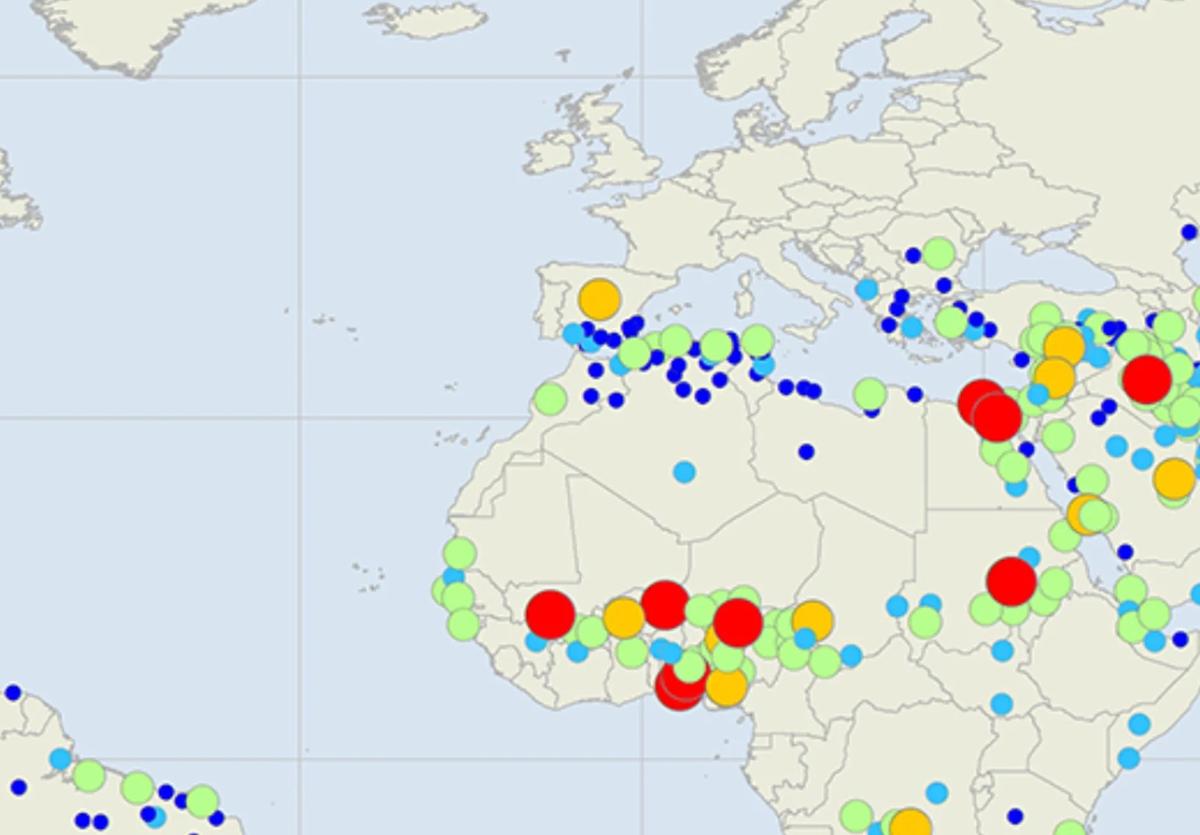US space agency Nasa identifies the cities in Andalucía that could be uninhabitable by 2050
'The future we don't want' report by the space agency claims that areas of Spain including Madrid, Valencia and parts of Andalucía could be at risk from rising temperatures
C. L.
Granada
Wednesday, 10 July 2024, 22:46
A report by the USA's space agency Nasa has revealed that "by the year 2050, some portions of our planet could become uninhabitable". To reach this conclusion Nasa used two "instruments", the first was reports from all available meteorological satellites to generate a map with a projection of three to five decades into the future.
The second "instrument" is known as the wet bulb index, a measurement that "indicates the lowest temperature to which an object can be cooled when moisture evaporates from it". To arrive at this index, the temperature and humidity of the air are combined, which tells us the thermal limit we can tolerate when it comes to dissipating heat through sweat.
The conclusion of the study is that this limit is 35C for six hours at a time, after which time we cannot regulate our body temperature outdoors. "The results have important implications. The hotter it gets, the more stressed our bodies become and the more we need to sweat to cool down. But humid air is less able to hold additional moisture, so water evaporates more slowly in humid conditions," the Nasa report explained.
It is humidity that marks the difference between 35C in some countries and the same temperature in others. Once the wet bulb temperature exceeds 35C, "no amount of sweating or other adaptive behaviour is sufficient to bring the body down to a safe operating temperature," said Colin Raymond, one of the authors of the study that identified the 'thermal boundary'. Most of the time it is not a problem, because the wet bulb temperature is usually 5-10C lower than body temperature, even in warm and humid places.
By 2050, Madrid, Valencia and Andalucía are expected to experience three consecutive months with temperatures of 35C or higher, according to the report "The Future we don't want", based on data from four NCCS (Nasa's Center for Climate Simulation) satellites.
Anticipating when we might see global wet bulb temperatures regularly exceed 35C is very complex; it is a complicated process that occurs gradually and plays out differently in different places. "But climate models tell us that certain regions are likely to exceed those temperatures in the next 30 to 50 years.
The most vulnerable areas include South Asia, the Persian Gulf and the Red Sea by 2050; and eastern China, parts of Southeast Asia and Brazil by 2070," Raymond concluded. On the positive side, the regions in Spain are not as humid as these more tropical and at-risk areas of the planet.
